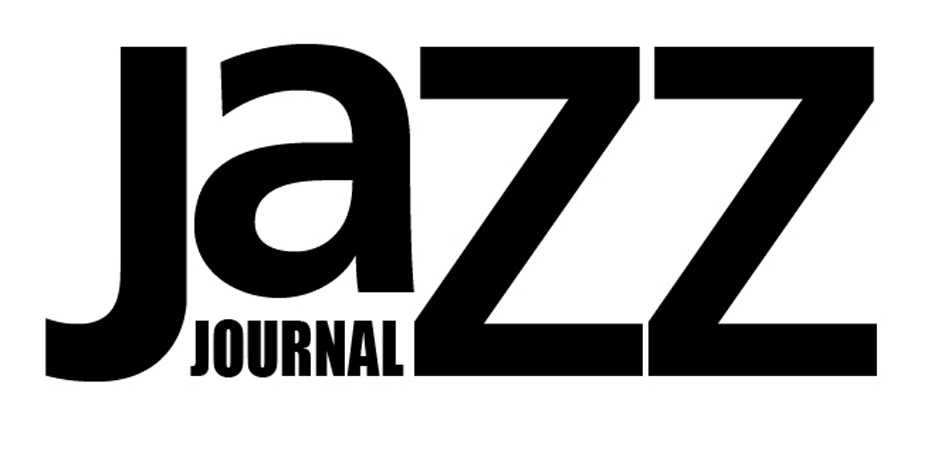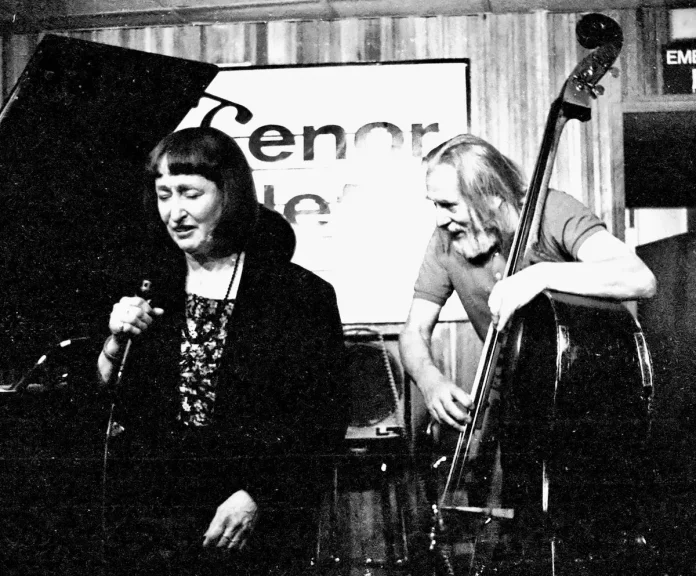On the 11th of August we lost one of the finest, most original singers in the history of jazz. Although she never attained the level of popular recognition enjoyed by Ella Fitzgerald and Sarah Vaughan (or Cleo Laine, who also died recently) she had steadily built an almost legendary reputation since the heyday of bebop, when Charlie Parker dubbed her “the lady with the million dollar ears”. Over the last few decades, thanks in part to an increased recorded output, her reputation had grown significantly but was still less than she deserved.
I first heard her in late 1965/early 1966 when she was appearing at Ronnie Scott’s and was featured on Peter Clayton’s BBC radio show. Soon after this she was lauded in Derrick Stewart Baxter’s column in Jazz Journal. He knew her personally so I asked him for her contact address and wrote to her without really expecting a reply. Reply she did, though, and her letter was gracious and friendly. Over the years we continued to correspond, and met several times in London, Brighton and Paris. She was always approachable and appreciative of her fans’ support, displaying a warmth that has always been foremost in her singing. She was also a genuine improviser of lyrics, not just tunes. For example, at the 1990 Brighton Festival, with a trio that included pianist Nick Weldon, mid-performance she spotted his photo on the wall of the venue and immediately incorporated a verse about his fame.
She was born Sheila Jeanette Dawson in Detroit, Michigan on 18 November 1928. Her mother, Margaret Dawson, was scarcely 17. The father married Margaret that evening but soon deserted her, divorcing her the following year to marry another woman carrying his child. Margaret realised she would be unable to give her daughter a stable start in life (this was during the Great depression) so sent Sheila to live with her parents in Summerhill, Pennsylvania where she would at least have the support of a family network: eight aunts and uncles as well as the grandparents. It was in this mining district that she would learn You Are My Sunshine. She would later record a stunning version of this song with the George Russell sextet.
Facilities at home were basic, with no piped water (just an outdoor pump) no toilet and virtually no heat, just a wood stove used for cooking, and a pot-bellied stove. When she was three she was sent to visit her mother in Detroit for a few weeks. Whilst there she entered in an amateur talent contest at the Michigan Theatre and came second. Singing was evidently therapeutic, a necessity, a compulsion even. She said “It was a release for me. I sang for Christmas plays, PTAs, social events and every chance I got. I used to sing to the streets and the mountains. I would learn the songs from the drunken miners when I would go to try to find my grandfather in some beer garden. People used to give me song books and I would learn the current hits of the day.” However, after local radio appearances in Altoona and Johnstown even this was spoilt for her: “The singing kept with me until about the 7th grade and then the kids in town started ridiculing my singing. After a school play or PTA meeting they would stand outside and imitate me and make it sound horrible so I gave up singing for people except at home.”
All these early traumatic experiences helped her build a necessary strength and resilience but also a sensitivity that clearly fed into her art. She started singing again in high school, and also started piano lessons. The teacher recognised her singing talent and tried to get her to sing in assembly, but, scared of further ridicule, she refused. However, the teacher got her to rehearse My Ideal with another girl who would drop out towards the end of the song. Sheila was unaware of the plot. It was a gamble, which could have scared Sheila off from singing publicly altogether but her performance was well received and Sheila felt good about the incident.
Later she returned to Detroit to finish high school. It was understandable that her mother should want Sheila with her, but the situation was far from ideal. Her mother was on her third (or possibly fourth) marriage and was drinking heavily. Again, music became a refuge for Sheila. A friend played her some records by Lester Young, Art Tatum and Billie Holiday, and Sheila was hooked on jazz. She soon discovered the music of Charlie Parker via recordings he made in 1945 for Savoy with a band he called the Ree Boppers. Sheila said “The first time I heard Bird I damn near fainted, was this man kidding? Surely one man alone wasn’t playing all that?”
She started to seek out places to hear the young musicians playing the new music. The problem was that jazz has always been predominantly associated with bars and other establishments where alcohol is a major part of the entertainment, so they were out of bounds to the under 21s. Eventually Sheila tracked down the Club Sudan in downtown Detroit: it was small, only sold soda and sandwiches, and let in 17-year-olds. Sheila recalls it had the atmosphere of a night club. “The kids were mostly black, but there were no prejudices. We were there to dig the new music and no-one really knew whose colour was who.” She was soon to find out that other people, notably the police, were not so casual about the races mixing, even just to listen to music.
She often spoke about the hostility she experienced because she associated with black people. Her determination to resist the bigotry was strengthened by the experiences she went through as a member of one of the poorest and most despised families in town. They shared the experience of being looked down on, of being judged not for the human qualities they possessed or lacked, but simply because they were different from the mainstream of white society. Sheila said that when she was growing up her identification with black people extended to wanting to be black.
At that time the young lions of the Detroit modern jazz scene included trumpeter Young Blood Davis, still at school and jamming at the clubs for the sheer love of playing. It was with Davis’s band, which also included Tommy Flanagan, that Sheila first remembers singing jazz in public. One night two young men, Skeeter Spight and Leroy Mitchell got up to scat sing with the band. Sheila sat in on one tune. Sheila reckons she was actually pretty awful, but Spight and Mitchell evidently heard her potential, and asked if she wanted to join them. They worked as “Skeeter, Mitch and Jean” concentrating on vocal versions of Parker solos similar to the style later made famous by (Dave) Lambert, (Jon) Hendricks and (Annie) Ross.
One night, Parker was booked at the Club El Sino, and Sheila went along, armed with her mother’s birth certificate, hoping to get in although she was still under age for a club selling alcohol. However, the doorman knew her and suggested she should be at home doing her homework. She retreated to an alley at the back of the building, joining some also trying to hear the music floating out from the club. There was a break, and Parker came out for some air. He asked what they were doing there, and they explained the problem. He couldn’t take them in as it was illegal for minors to be in a club with a bar, so he made sure the back door was left open so they could hear well. Parker’s band at that time included pianist Duke Jordan, whom she would later marry.
She once told me she began the relationship with Jordan in order to get closer to Parker. She married Jordan in 1953 but he was rarely around to support her or their daughter. (He was not even around for the birth,) He had a heroin habit and was not encouraging about her singing. They would divorce in 1962. Sheila supported herself and daughter Tracey over the years by taking clerical jobs at advertising agencies, including Doyle Dane Bernbach, where she worked for over 20 years. (During 1967-68 she sang on three TV commercials for them.) At that time she was mainly performing jazz with a liturgical content, working with Jack Reilly and Don Heckman in particular.
During a chance meeting with Charles Mingus he told her that pianist Lennie Tristano was giving lessons, so she signed up. She became friends with a fellow pupil, the English bass-player (and later record label and club proprietor) Peter Ind. Some years later, he would provide her first official recording opportunity. (Yesterdays on Ind’s album, Lookin’ Out.) Tristano organised jam sessions at his loft every Saturday night and Sheila felt confident enough to sit in and try out her ideas without fear of harassment. Soon after, Sheila and Duke separated temporarily, and she began to run her own jam-sessions. Amongst those who came round were Parker, pianist Paul Bley and Sonny Rollins.
Her major breakthrough was when she recorded an album for Blue Note, the first singer to be showcased with an album of their own for the label. Portrait Of Sheila remains a definitive recording, notwithstanding other outstanding recordings she made in later years. (In February this year her last recordings were released as Portrait Now, which shares some songs with the 1962 album.)
It was not until the late 70s, with Tracey settled at college, that Sheila began to make more recordings, starting with Confirmation for the Japanese label East Wind. She was able to tour more, and in the 1980s in particular she established strong musical relationships with groups like the quartet with Steve Kuhn. She told me in a letter “I am part of a group of four musicians making music together … the concept is very important … not a singer with a trio … people think Steve is my accompanist and that is not the case.” I think it reasonable to see this attitude as key to her art throughout her career, and is also evident in her penchant for working in duos with bassists, including Peter Ind (who was very important in bringing her to public notice) and Cameron Brown, Steve Swallow, Harvie Swartz and Arild Anderson. At the other end of the scale, in 1971 she played a small but distinctive part in Carla Bley’s epic Escalator Over The Hill. She also recorded adventurous music with the Jazz Composers Orchestra (1971 & ’73) and the George Gruntz Concert Jazz Band (1983). She began a career as an educator (from 1978 until 2005 she taught jazz vocal at the City College of New York) and in 2012 she received the National Endowment of the Arts Jazz Master award. She said “It’s been a beautiful experience for me. And I don’t know, I just try to teach from my heart.” Another quote encapsulates her attitude and her contribution: “I just want to keep this music alive by inspiring others to love it as much as I do.”

